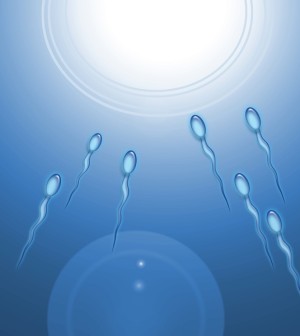- Skip Storing This Everyday Product in the Fridge Door
- Green Tea + B3 Pairing May Boost Brain Health
- Navigating Your Midlife Crisis: Embracing New Possibilities
- City Raccoons Showing Signs of Domestication
- Mapping the Exposome: Science Broadens Focus to Environmental Disease Triggers
- One Week Less on Social Media Linked to Better Mental Health
- Your Brain Changes in Stages as You Age, Study Finds
- Some Suicide Victims Show No Typical Warning Signs, Study Finds
- ByHeart Formula Faces Lawsuits After Babies Sickened With Botulism
- Switch to Vegan Diet Could Cut Your Greenhouse Gas Emissions in Half
The Mystery of the Female Orgasm Solved?

The female orgasm — famously faked by Meg Ryan in “When Harry Met Sally” — may have its true roots in evolution as an aid to conception, new research suggests.
In their study, researchers at Yale University noted that while the male orgasm’s role in getting the sperm to meet the egg has long been clear, the female orgasm’s role has been a mystery.
It has no obvious role in the success of reproduction or in the number of children, so scientists have long tried to determine why women have orgasms, said a team led by Yale professor of ecology and evolutionary biology Gunter Wagner.
He and co-researcher Mihaela Pavlicev, of Cincinnati Children’s Hospital, studied other mammals for clues into how the female orgasm evolved. They looked at non-human mammals and focused on a specific reflex that goes along with orgasms in women — release of the hormones prolactin and oxytocin.
In many mammals, this orgasm-linked reflex plays a role in ovulation — specifically, helping to stimulate the release of eggs from the ovaries.
Despite the fact that mammals vary widely today, this trait may have been necessary to ovulation in species that were ancestral to humans. “This [orgasm-linked] reflex became superfluous for reproduction later in evolution, freeing [human] female orgasm for secondary roles,” according to a Yale news release.
The study authors also noted that the clitoris appears to have shifted in anatomical position throughout evolution — so that it now is less likely to be directly stimulated during intercourse.
The study was published Aug. 1 in the journal JEZ-Molecular and Developmental Evolution.
More information
The Society of Obstetricians and Gynecologists of Canada has more on female orgasm.
Source: HealthDay
Copyright © 2025 HealthDay. All rights reserved.










